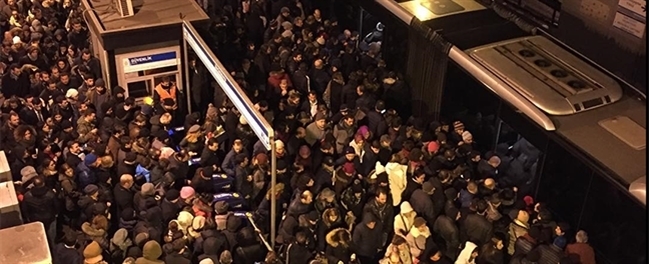
Public transportation vehicles are the vehicles that are used for travels outside of our personal vehicles. In general, we can list vehicles such as buses, minibuses, shared taxis, metro, trams, metro buses, planes, boats, ferries, etc. 6 million people get on public transportation every day in İstanbul, 3 million in Ankara and 1.5 million in İzmir. The passengers from İstanbul spend an average of 2.5 hours a day on public transportation. These areas, which are mostly enclosed, where so many people stand together, are open to many threats.
There are many factors that threaten the passenger in public transportation. We can divide them into 2 main categories. The first is accidents and the second is criminal acts. When accidents are concerned, traffic accidents, damage to standing passengers due to sudden braking, keeping the doors open, fire, etc. can be considered. In addition, vehicles that are not suitable for disabled people and pregnant women also cause harm to people. We can consider criminal acts as using alcohol, smoking, eating harmful food, wearing bad and smelly clothes, damaging the vehicle, causing inconvenience, insulting people, fighting, pickpocketing, harassment, terror, etc.
Our public enterprises carry out many studies and practices against such threats that we are exposed to every day. We develop solutions with electronic security systems. For this purpose, security cameras, access control systems, fire alarm/extinguishing systems and emergency announcement systems are used. The goal is primarily early detection and prevention. These devices are then used to support emergency management. Throughout this process, crime and evidence detection is carried out with the electronic security systems.
Vehicles are continuously recorded while in operation or running. The behavior of the driver, passenger, cargo and entrance doors are recorded with the internal cameras and the whole road is recorded with the surrounding cameras. After any accident or incident, the images of the incident can be backed up and given to the relevant law enforcement authorities. When the reverse gear is engaged, the monitor of the reverse camera can ensure that the maneuvers are conducted safely. Emergency notification can be sent to the driver and the center with the panic button. It is possible to quickly send the vehicle's location and camera images to the center by using the panic buttons placed in various areas for accidents, vehicle failure, harassment or different emergency cases. You can talk to the central driver online with a 2-way audio device. With the vehicle tracking system feature, all vehicles can be monitored instantly on the map.